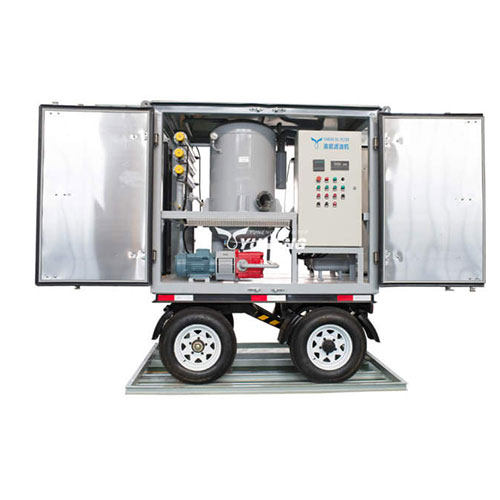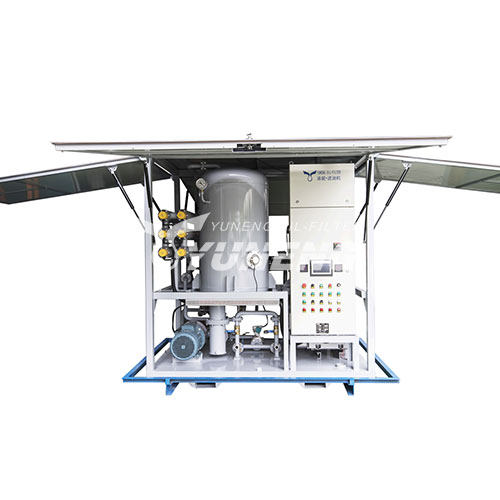Portable Transformer Oil Filtration Machines: Types, Features, and How to Use
Transformer oil plays a crucial role in the efficient functioning and longevity of electrical transformers by providing insulation and dissipating heat. Over time, however, transformer oil can become contaminated with impurities and moisture, leading to reduced performance and potential damage. To maintain the integrity of the oil and the transformers, regular maintenance is necessary. This is where portable transformer oil filtration machines come into play. These machines offer an effective solution to remove impurities and moisture from transformer oil, thereby extending the lifespan of both the oil and the equipment. In this article, we will delve into the various types and features of these machines, as well as provide insights into their proper usage.
Types of Portable Transformer Oil Filtration Machines
Portable transformer oil filtration machines come in different types, each designed to address specific aspects of oil contamination. Understanding the differences between these types can help users make an informed decision about which machine suits their needs best.
- Vacuum filtration machines: These machines use a vacuum to remove impurities from the oil. The vacuum pulls the oil through a filter, which removes the impurities. Vacuum filtration machines are very effective at removing impurities, but they can be expensive and require a lot of power.
- Dehydration machines: These machines use heat and vacuum to remove moisture from the oil. Moisture is a major cause of transformer oil degradation, so dehydration machines can help to extend the life of the oil. Dehydration machines are not as effective at removing impurities as vacuum filtration machines, but they are less expensive and require less power.
- Coalescence filtration machines: These machines use a special filter to remove small particles from the oil. The filter is designed to allow oil to pass through, but it traps small particles. Coalescence filtration machines are not as effective at removing impurities as vacuum filtration machines, but they are less expensive and easier to maintain.

Features of Portable Transformer Oil Filtration Machines
When selecting a portable transformer oil filtration machine, several features should be taken into account to ensure optimal performance and value for money.
- Capacity: The capacity of the machine determines how much oil it can filter in a single cycle. It’s essential to choose a machine that can handle the volume of oil present in your transformers. Consider both the initial capacity and the processing rate to ensure efficient maintenance.
- Purity Level: Different applications might require varying levels of oil purity. Look for a machine that can achieve the desired purity level, as stated by the manufacturer’s specifications. A high-quality filtration machine will consistently deliver clean oil that meets industry standards.
- Portability: The very essence of a portable transformer oil filtration machine lies in its ability to be easily moved from one location to another. Opt for a machine with ergonomic design features, sturdy handles, and efficient wheels, ensuring hassle-free transportation.
- Filtration Process: Understand the filtration process employed by the machine. Some machines might use a combination of vacuum and filtering mechanisms, providing a comprehensive solution for oil purification.
- Monitoring and Control: Advanced filtration machines often come equipped with monitoring and control systems that allow users to track the progress of the filtration process and make adjustments if necessary. Such features enhance the user’s ability to maintain the desired oil quality.
How to Use a Portable Transformer Oil Filtration Machine?
Proper usage of a portable transformer oil filtration machine is essential to achieve optimal results and maintain the integrity of both the machine and the transformer. Here’s a step-by-step guide:
- Read the Manual: Begin by thoroughly reading the manufacturer’s instructions and guidelines provided in the user manual. This will give you a clear understanding of the machine’s functionality, safety measures, and maintenance requirements.
- Prepare the Equipment: Set up the filtration machine in a suitable location. Ensure that all the necessary components, such as hoses and filters, are correctly attached and secure.
- Prepare the Oil: Before starting the filtration process, ensure that the transformer oil is at the appropriate temperature and viscosity for effective filtration. Some machines might require pre-heating the oil.
- Start the Machine: Power on the machine according to the manufacturer’s instructions. Adjust the settings, such as flow rate and vacuum strength, as recommended.
- Initiate Filtration: Begin the filtration process by turning on the vacuum or other filtration mechanisms. The machine will draw the oil through the filtering system, removing impurities and moisture.
- Monitor Progress: Keep an eye on the machine’s monitoring system, if available, to track the progress of the filtration process. This will allow you to make adjustments as needed.
- Collect the Clean Oil: As the filtration process continues, the purified oil will be collected in a separate container. Ensure that the collection container is clean and free from contaminants.
- Shutdown and Maintenance: Once the desired amount of oil has been filtered, carefully power off the machine. Follow the manufacturer’s guidelines for proper maintenance, which may include cleaning filters, replacing worn components, and storing the machine appropriately.

Conclusion
Portable transformer oil filtration machines are a valuable tool for maintaining the performance and lifespan of transformers. By choosing the right machine and using it properly, you can help to ensure that your transformers operate safely and efficiently for many years to come.
